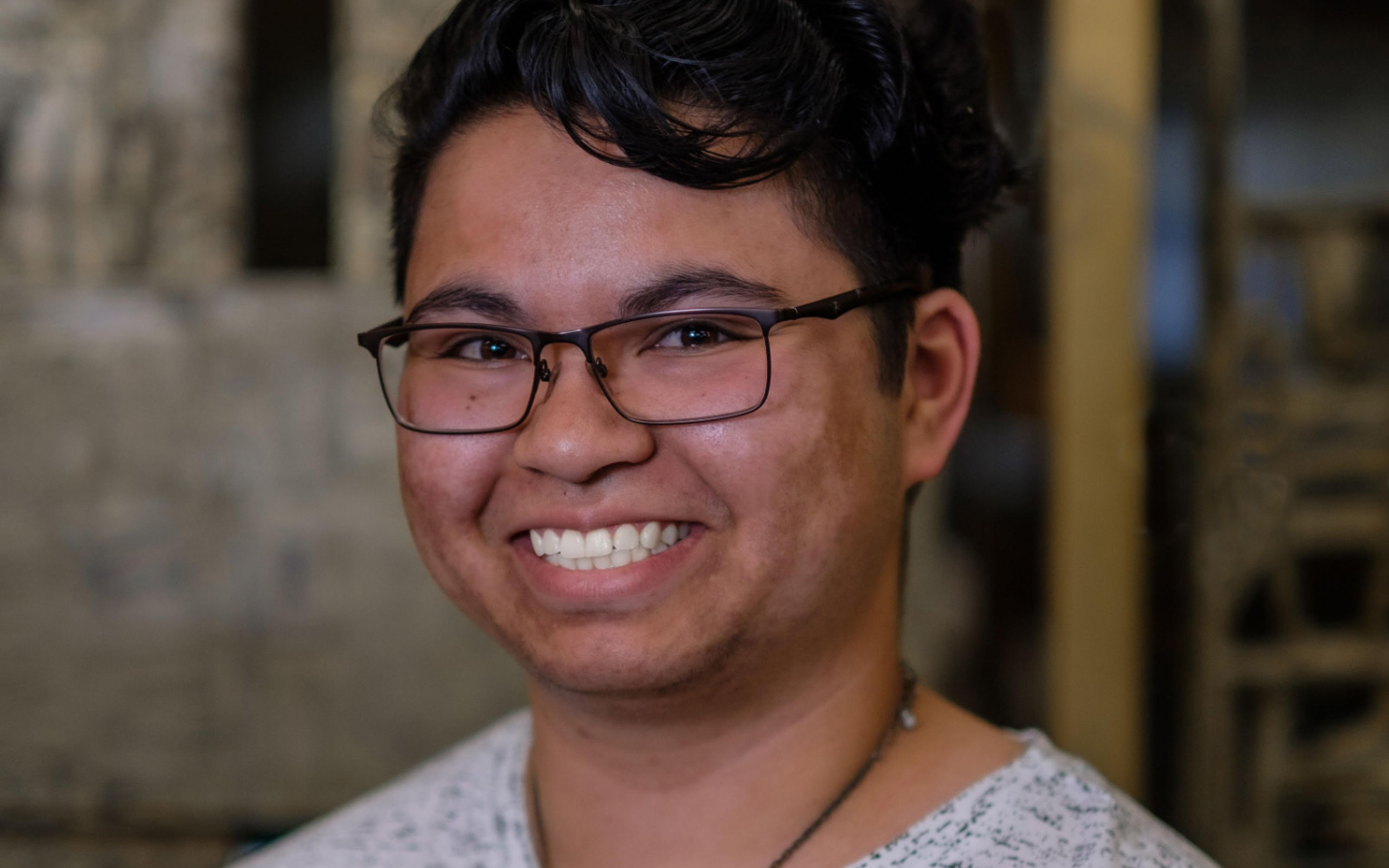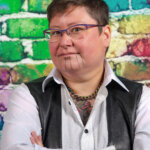In his 360-degree video A Drive to Top Surgery, Two-Spirit artist Raven Two Feathers (Cherokee/Seneca/Cayuga/Comanche), his mom and grandma drive the short distance to his surgeon while they make conversation about people they see along the way and logistics for the after the surgery. A nervous energy of possibility fills the car as Raven heads to his destination, and the 360 nature of this video allows us to see not only where he’s coming from but also where he is going.
It’s this kind of innovation that Two Feathers brings to ImagineNATIVE’s Digital Indigiqueer: Trans Transmedia in the iNdigital Space this year. Also included in the festival is Raven’s audio work hā / shəliʔ, in which he situates himself within natural soundscapes of the ocean, as well as his short video, A Heart Free. (Two Feathers uses he and they pronouns interchangeably.)
Thirza Cuthand, Xtra contributor and last year’s ImagineNATIVE spotlighted artist, spoke with him about his featured work in this year’s festival.
What brought you to media art?
I always say that, when I was three, I watched too much TV, and the first credit that I saw on screen was “producer.” And I said, “I want to do that.” But I feel like I really got drawn into it when I took a film production class in middle school. And then I just kept taking film classes through high school and went to film school in college and didn’t stop. I really liked telling stories and so, one way or another, I made it work.
Your 360-degree video, A Drive to Top Surgery, features you, your mom and your grandma. Why was it important for you to show this moment with your family?
There were a lot of points where, before I got top surgery, I watched a lot of videos that were mainly white trans guys who were getting top surgery, and just before they would leave the house, they would cut and then they wouldn’t come back into frame until they got to the surgeon’s office. And I always kept wondering, because my surgeon is pretty close to where I live, what that drive would be like and what happens. What are the emotions that happen during that drive? So I decided, why not record it? And I had also recently gotten a VR fellowship, the #GenIndigenous Youth Fellowship, so I decided to apply one of my projects that I had to do to filming A Drive to Top Surgery.

Credit: Courtesy ImagineNATIVE
There’s also an intimacy in that video. You can sense your nervous energy, but your grandma is literally guiding you to your destination, which is really sweet. What do you want people to take away from experiencing that with you?
I think just the ability to find family and found family through these raw and intimate interactions that you have with them and learning how to trust people. That’s not always easy.
Was this your first 360-degree video? How is making it different from making your usual videos?
It was the first 360 piece that I directed. I essentially say that it’s like a reverse theatre in that it requires a certain amount of letting go of control. Whereas in film, you’re literally telling people where they need to look or where they will be looking. With 360 videos—while still directed and curated—a certain amount of flexibility is given to the audience to choose what they want to look at and how they want to absorb the world that they’re in.
Moving on to your audio work: in hā / shəliʔ, you make a soundscapes out of elemental noises and voices. People have always said there’s a spiritual component to being Two-Spirit, and I felt it really strongly with this audio work. Can you talk about this?
I co-directed that piece with Rafael/a Luna-Pizano, and they were in Aotearoa [New Zealand] at the time that we were creating the piece for Northwest Portland Area Indian Health Board. [Two-Spirit educator] Itai Jeffries brought us both on to collaborate on that piece. And as much as we ourselves, as humans, are a part of the landscape, we don’t always give the landscape and the waterscapes room to speak. And so a lot of the work that Luna-Pizano had been doing in Aotearoa was exploring elemental themes of what it means to be trans. And for me, what it means to be Two-Spirit—it really felt like it was the right place to bring those voices in and honour them.

Credit: Courtesy ImagineNATIVE
When I was listening to it, I was thinking about how, when I’m in a natural space like the forest or by the ocean, there’s always that sense of acceptance that you don’t feel when you’re around people. And there’s never discrimination when you are in nature; your audio work reminded me of that, too. What do you think the connection is between transness and nature?
I think that simply in the word “trans” you are experiencing that ever-evolving nature (totally intentional pun). You’re experiencing what it means to continuously evolve, morph and be flexible—not only with yourself and all of the bacteria and organisms and individual cells that make up yourself, but also with how you interact with the world and blurring those lines and realizing that hardly anything is a rigid binary.
What other projects are you working on these days?
I am working on a docuseries about seven different folks across the country and their relation to Indigeneity outside of the gender binary, what it means to deal with borders and binaries and generally live a happy and full life. It’s essentially an exploration of borders, binaries and what it means to be in community—both with humans and the land that you’re on and ancestrally from.
I’m also starting up my company, Raven and Relatives. I have a splash page right now, but that’s about it. We’re still working on the full website.
If there was a young trans Two-Spirit person reading this, what would you tell them about expressing themselves through art?
I would say, similar to coming into your full self or realizing your full self, apply that same amount of go-get-them nature. Just go for it—go for it whole-heartedly. And remember to keep the people who care about you close as you create, because they’re going to be there for you when you need them. You might not realize the full potential that you have and will be bringing into this world and that it’s desperately needed. I would also tell them, “Hi.” Message me on Instagram!
ImagineNATIVE’s Digital Indigiqueer: Trans Transmedia in the iNdigital Space shows until Oct. 24.


 Why you can trust Xtra
Why you can trust Xtra


